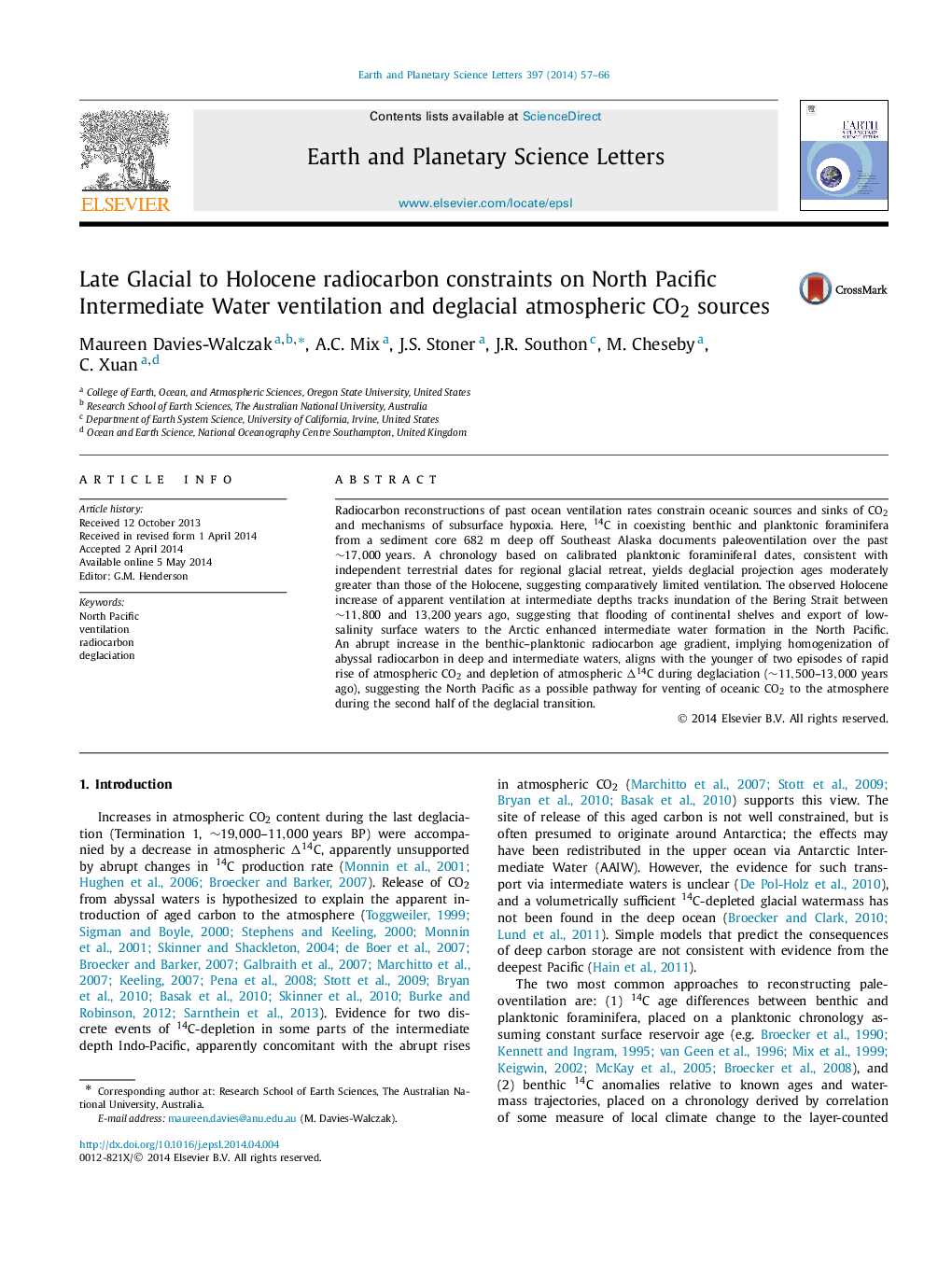| Article ID | Journal | Published Year | Pages | File Type |
|---|---|---|---|---|
| 6429365 | Earth and Planetary Science Letters | 2014 | 10 Pages |
â¢Gulf of Alaska marine radiocarbon records deglacial circulation and CO2 pathways.â¢Sealevel rise and Bering Strait throughflow enhanced intermediate depth ventilation.â¢The younger deglacial atmospheric CO2 jump, 12.5-12 ka, had a North Pacific source.
Radiocarbon reconstructions of past ocean ventilation rates constrain oceanic sources and sinks of CO2 and mechanisms of subsurface hypoxia. Here, 14C in coexisting benthic and planktonic foraminifera from a sediment core 682 m deep off Southeast Alaska documents paleoventilation over the past â¼17,000 years. A chronology based on calibrated planktonic foraminiferal dates, consistent with independent terrestrial dates for regional glacial retreat, yields deglacial projection ages moderately greater than those of the Holocene, suggesting comparatively limited ventilation. The observed Holocene increase of apparent ventilation at intermediate depths tracks inundation of the Bering Strait between â¼11,800 and 13,200 years ago, suggesting that flooding of continental shelves and export of low-salinity surface waters to the Arctic enhanced intermediate water formation in the North Pacific. An abrupt increase in the benthic-planktonic radiocarbon age gradient, implying homogenization of abyssal radiocarbon in deep and intermediate waters, aligns with the younger of two episodes of rapid rise of atmospheric CO2 and depletion of atmospheric ÎC14 during deglaciation (â¼11,500-13,000 years ago), suggesting the North Pacific as a possible pathway for venting of oceanic CO2 to the atmosphere during the second half of the deglacial transition.
